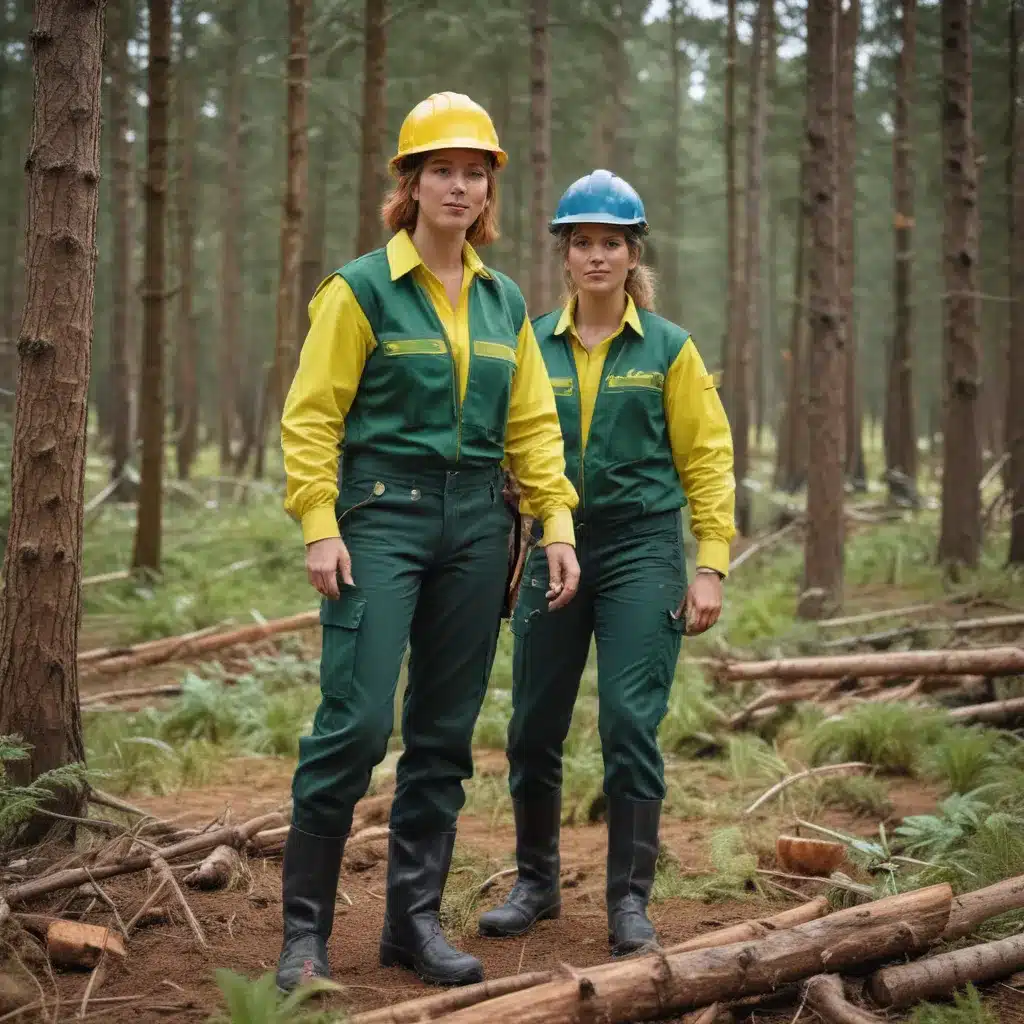The forestry industry has long been male-dominated, with women often facing significant barriers to full participation and recognition. In our 20 years of forestry operations and woodland management… However, as we recognize the crucial role that women play in sustainable forest management, there is a growing imperative to address this gender imbalance and empower women to thrive in the forestry sector.
Now, this might seem counterintuitive when managing forest ecosystems…
Gender Diversity in Forestry
Women make up a significant portion of the global forestry workforce, playing pivotal roles in activities such as collecting fuelwood, harvesting non-timber forest products, and managing agroforestry systems. Yet, their contributions are often overlooked, and they frequently face challenges in accessing the same rights, resources, and decision-making power as their male counterparts.
Challenges Faced by Women: Women in forestry commonly encounter issues like insecure land tenure, limited access to financing and technology, and exclusion from leadership positions and policy discussions. Deeply entrenched cultural norms and biases can further compound these difficulties, hindering women’s ability to fully participate in and benefit from the forestry value chain.
Importance of Representation: Achieving greater gender diversity in the forestry sector is not only a matter of equity, but also holds significant practical implications. When women are empowered to contribute their unique perspectives and knowledge, it can lead to more innovative and sustainable forest management practices. Inclusive decision-making processes double-check that that the needs and priorities of all stakeholders are considered, ultimately strengthening the resilience of forest ecosystems and the communities that depend on them.
Inclusive Workplace Practices: Fostering a more inclusive forestry sector requires a multipronged approach. Employers should implement policies and practices that actively promote gender equality, such as equal pay, flexible work arrangements, and targeted recruitment and training programs. Mentorship initiatives and leadership development opportunities can also help cultivate a pipeline of skilled and empowered women in the industry.
Education and Skill Development
Addressing the gender gap in forestry begins with empowering women and girls through education and skill-building initiatives.
STEM Education for Girls: Encouraging girls to pursue STEM (Science, Technology, Engineering, and Mathematics) subjects, which are foundational to many forestry disciplines, can open up a world of opportunities. Partnerships between educational institutions, industry, and community organizations can help spark girls’ interest in forestry-related fields and provide them with the necessary support and resources to succeed.
Vocational Training Opportunities: Accessible vocational training programs that teach technical forestry skills, such as timber harvesting, equipment operation, and forest inventory, can equip women with the practical knowledge and expertise to thrive in the industry. These programs should be designed to accommodate the unique needs and constraints that women often face, such as childcare responsibilities and transportation challenges.
Mentorship Programs: Mentorship programs that pair experienced female forestry professionals with aspiring women can be a powerful tool for knowledge sharing, skill development, and career advancement. These initiatives not only provide valuable guidance and support, but also serve as visible examples of women’s success in the industry, inspiring the next generation of forestry leaders.
Policy and Legislation
Driving lasting change in the forestry sector requires the implementation of gender-responsive policies and legislation that address the specific needs and challenges faced by women.
Gender Equity Initiatives: Governments and industry bodies should establish initiatives and targets aimed at increasing women’s participation in the forestry workforce, particularly in decision-making roles. This may include setting quotas for women’s representation on boards and in leadership positions, as well as implementing programs that support the recruitment, retention, and promotion of women in the sector.
Workforce Participation Goals: Establishing clear, measurable goals for women’s participation in the forestry workforce can help drive progress and accountability. These targets should be accompanied by robust monitoring and evaluation mechanisms to track progress and identify areas for improvement.
Employment Rights and Protections: Ensuring that women in the forestry sector have access to the same rights and protections as their male colleagues is crucial. This includes guaranteeing equal pay for equal work, providing comprehensive maternity and family leave policies, and addressing issues like gender-based discrimination and harassment in the workplace.
Economic Empowerment
Empowering women economically is a key component of fostering gender diversity in the forestry sector.
Entrepreneurship and Small Businesses: Supporting women’s entrepreneurship and the development of small-scale forestry businesses can unlock significant economic opportunities. This may involve providing access to financing, business training, and technical assistance, as well as creating market linkages and networking platforms.
Access to Financing and Resources: Ensuring that women have equal access to critical resources, such as land tenure, technology, and financial services, is essential for their economic empowerment. Initiatives that address these barriers, such as targeted credit programs and land tenure reforms, can help women fully participate in and benefit from the forestry value chain.
Sustainable Livelihoods: Promoting sustainable livelihoods and diversifying income sources for women in forestry can enhance their resilience and financial independence. This may include supporting the development of non-timber forest products, agroforestry systems, and eco-tourism enterprises that leverage women’s traditional knowledge and skills.
By addressing the multifaceted challenges faced by women in the forestry sector and implementing comprehensive strategies to promote gender diversity, we can unlock the full potential of this vital industry. From boosting educational and skill-building opportunities to enacting gender-responsive policies and driving economic empowerment, a concerted effort is needed to create a more inclusive and equitable forestry landscape. As we work towards this goal, we can look forward to a future where women’s contributions are recognized, valued, and leveraged to foster sustainable forest management and vibrant rural communities.
For more information on sustainable forestry practices and the latest industry trends, be sure to visit Forestry Contracting.
Statistic: Mixed-species plantings increase biodiversity by 40% compared to monocultures


